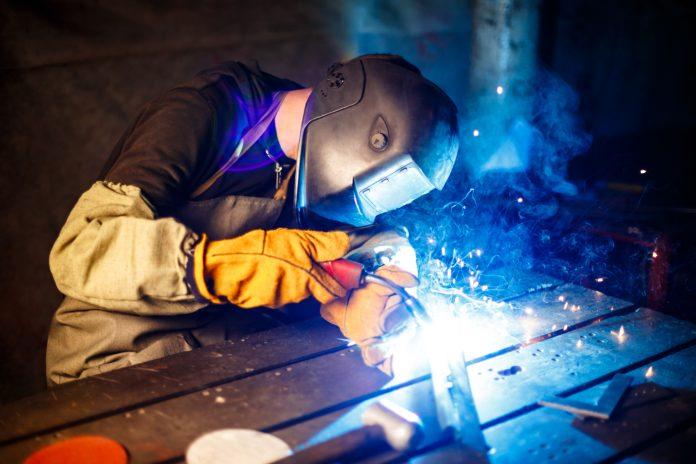Welding produces dangerous fumes that can cause lasting health issues for welders if not properly controlled. Implementing effective welding fume extraction and ventilation is crucial to ensuring welding is performed safely and compliantly. In this guide, we will dive into the risks of welding fumes, OSHA ventilation requirements, types of fume extraction systems and the best practices for exposure control. By the end, you will understand critical strategies welders and employers should implement to protect against the dangers of welding smoke.
Hazards of Welding Fumes
The fumes and gases generated from welding processes like MIG, TIG, and stick welding contain toxic metal particulates and compounds that damage health if inhaled regularly. Both the particulate matter itself along with gases like ozone, carbon monoxide, and nitrogen oxides contribute to the hazards. Common problematic components include manganese, chromium, nickel, and cadmium.
Potential acute effects of overexposure include dizziness, metal fume fever, eye and lung irritation. But the greater risks come from cumulative exposures over months and years:
- Respiratory illness – bronchitis, emphysema, asthma
- Neurotoxicity – hand tremors, slowed reaction time
- Kidney damage and infertility
- Lung, bladder, and colon cancers
- Increased infection risk
Clearly, keeping fume concentrations low and away from welders’ breathing zones is critical for short and long term wellbeing.
OSHA Ventilation Requirements
To protect welding trade workers, OSHA has standards mandating that:
- Local exhaust or general ventilation must be provided.
- Exposure may not exceed 5 mg/m3 of respirable particulate over an 8 hour shift.
- Filtration and extraction equipment should capture fumes near the arc.
- Areas with poor ventilation are designated “hot work zones” requiring respirators.
- Training must cover proper ventilation procedures and PPE use.
Employers who fail to meet these requirements risk heavy penalties and fines. Having updated filtration technology and protocols is crucial.
Extraction System Types
There are various extraction solutions that effectively capture welding fumes:
- Welding Fume Extractor Guns – Integrated fume extractors on the gun nozzle capture the plume directly at the source while welding using built-in suction. They filter and recirculate clean air back into the workspace.
- Portable Extractors – Flexible mobile units with articulating arms can be positioned near the welding work area. The arm is positioned behind the plume to extract the fumes which are then filtered.
- Downdraft Tables – Fumes are drawn down through slots in the welding table into a filtration system before being exhausted. This pulls fumes away from the welder’s breathing zone.
- Central System Exhaust – Stationary extraction fans mounted overhead or on walls designed to create directional airflow pulling from welding bays through ductwork into dedicated filtration units.
The goal is to catch fumes before they disperse into general workspace air. Loose particulate also gets captured through settling chambers.
Best Practices for Exposure Reduction
In addition to extraction technology, certain work habits promote exposure control:
- Position fume extractors as close to the arc as possible inside the plume.
- Angle extraction arms behind rather than in front of you.
- Take regular breaks from concentrated fume areas.
- Use respirators when ventilation is inadequate.
- Avoid airflow disruptions from open doors or cross-drafts.
- Inspect equipment routinely for leaks or damage.
- Follow maintenance procedures for filters.
With training, planning, and the right equipment, welding fume exposure can be significantly reduced. Ensure your workforce understands the risks and solutions.
Prioritize Safety Through Extraction
Welding fumes contain known carcinogens and toxins that create both short and long term threats for welders. Using localized fume extractors, general ventilation, and safe work practices is critical to complying with OSHA rules and protecting worker health.
Consult industrial hygienists to design and install ventilation systems tailored to your specific workspace setup and welding needs. The upfront investment is minor compared to the human costs of improperly controlled fume exposures. When it comes to your workforce’s respiratory health, don’t cut corners.
Conclusion
The bottom line is that welding fumes contain known carcinogens and other hazardous substances that pose both acute and chronic health risks to welders. Implementing localized fume extraction systems, general ventilation, safe work practices, and proper PPE is critical for reducing workers’ exposure to these invisible threats. While ventilation requires an investment, the rewards in terms of compliant, safer working conditions and healthier employees over the long term far outweigh the costs. By partnering with industrial hygiene experts and leveraging the latest filtration technologies, welding businesses can take proactive steps to control fumes at their source and establish a work environment focused on safety first. When it comes to protecting your workforce from lung disease, neurological damage, and the threat of cancer, don’t cut corners on fume control. Their health and safety should always take priority.
